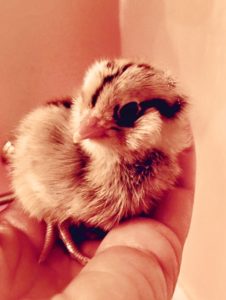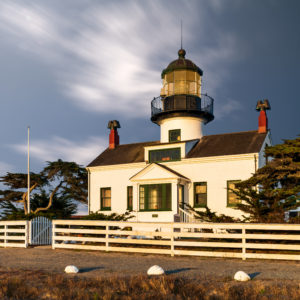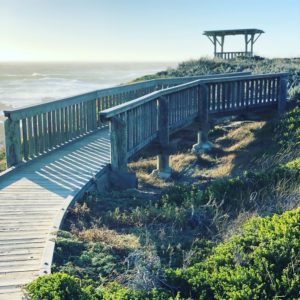-
Eight Easy Steps To Perfect Chick Hatching

I started out hatching and raising chickens, without any experience, and so can you! Follow my 8 easy steps:
- Make sure you start with fresh, healthy, fertilized eggs.Discard any that are cracked or have any odor. Do not use any eggs older than two weeks.

- Get a good incubator. In my opinion Brinsea is the best for people starting out. I started out with the Brinsea Mini Advance and then moved up to a Brinsea Octagon Advance because it holds more eggs than the Mini and it is easier to monitor humidity levels than the Mini.

- Set the temperature between 99.4 -99.6 degrees F.
- Make sure that from day one through day twenty your humidity is consistently between 40-50%. I add water daily to my Brinsea incubator to ensure consistent humidity at this level.
- Ensure that the eggs are being rotated regularly, just as the mother hen would do herself. Brinsea ensures that this occurs do you don’t have to worry about it.
- On day 19, stop the rotation on your device (on the Octagon just remove the cradle) so that the eggs remain stable and remove any brackets holding the eggs in place
- On day 21, add enough water to get humidity levels to 65%.This will enable the chicks to peck out of their shell.
- This is the hardest but most important step. Do not take the cover off your incubator until nearly all eggs have hatched. This may take up to three days! I learned the hard way. If you take the cover off, even briefly, the change in humidity can literally shrink wrap all chicks in eggs in the process of hatching and increase their mortality rate substantially. Tempting as it may be, leave them alone! Don’t worry about getting them food and water right away; for up to 72 hours after they hatch, baby chicks are still ingesting their yolk sacs. This provides them all the nourishment they need.
Not all of your eggs may hatch, some may start to pip and then stop. There is usually a good reason they are not strong enough to survive, it is normal to not have a 100% hatch rate. After 24- 36 hours from the first chick hatch you may transfer the chicks to their next home: either the Brinsea Ecoglow Brooder or beneath a 250 Watt Red Heat Lamp. I started with the red heat lamp and switched to the Ecoglow brooder because A. it is cheaper to maintain, and B. it is much safer. I will discuss this more in “When Your Chicks have Hatched”
- Make sure you start with fresh, healthy, fertilized eggs.Discard any that are cracked or have any odor. Do not use any eggs older than two weeks.
-
Point Pinos Lighthouse, Pacific Grove

Point Pinos Lighthouse, located In Pacific Grove, is the oldest continuously operating lighthouse on the west coast of the United States. In 1855, it was the second lighthouse built in California. Alcatraz Island Lighthouse had been built 8 months previously, but in 1909 was replaced by the famous prison. Point Pinos was built atop a quaint house enabling keepers to tend the light without fearing the elements. Point Pinos Lighthouse uses a Fresnel lens manufactured in France in 1853. The beacon is still used by the Coast Guard to aid navigation and the city of Pacific Grove maintains the property. While it began as just a narrow light beam fueled by whale oil, in 1912 it used an “eclipse” that made the light blink on for 10 seconds and off for 20 seconds. Today, the light is electronic and is on for three seconds and off for one, which helps mariners identify it. Point Pinos stands 43 feet tall, approximately 90 feet above the ocean, and its lens can be seen 17 miles out to sea.
History
Point Pinos Lighthouse has had many keepers, but perhaps the most interesting was Emily Fish. Emily Fish’s sister died in childbirth, and at age 17, Emily married her dead sister’s husband, Malancthon Fish, and raised her sister’s baby daughter, Juliet. Mr. Fish, a medical doctor, died when Emily was 50 years old. Following his death, Emily applied for the position of lighthouse keeper at the Point Pinos Lighthouse in Pacific Grove, CA. This was considered highly unusual, as most women only received their positions upon the death of their lighthouse keeper husbands. Emily, however, was an anomaly. She bucked the norms and defied gender roles. She would not be foiled in her efforts, proving that no matter how old you are and what society thinks, you should always follow your dreams and aspirations.
She thrived in her position, and for over twenty years, lived and worked at the lighthouse with her menagerie of French poodles, Holstein cows, horses, and chickens. She excelled at gardening and created an oasis of grass, hedges, and trees on the lighthouse grounds. From her home in Oakland, she brought antique furniture, paintings, china, and silverware. Being a lighthouse keeper was no easy chore; rather, it was a difficult and demanding life. Emily, however, excelled at her job, and soon became known as the “Socialite Keeper” because of her flair for style and fashion and her reputation for entertaining guests at the lighthouse. During her keep, Point Pinos Lighthouse consistently received high marks for being well-kept.
While Emily is the most memorable female lighthouse keeper at Point Pinos, she was not the first. The light’s first keeper, Charles Layton, was serving on a posse in pursuit of an outlaw when he was fatally shot the first year he was appointed. His wife Charlotte, left alone with four children, replaced her husband as keeper until 1860 when she was remarried and her new husband took over the position.
If you are planning on visiting the area and would like to tour the lighthouse, please see pointpinoslighthouse for information including directions, hours, and parking. *Photo courtesy of Jay Slupesky, follow him on Instagram @jayslu
-
Butterfly Town: Pacific Grove


What do butterflies and quaint seaside Victorian houses have in common? Pacific Grove! Called “PG” by the locals, it is a quiet town filled with history and charm. It was originally a Methodist Church camp in the late 1800s and nowadays boasts more historical houses per capita than anywhere in California. Perhaps owing to its pious history, it was the last dry town in California and did not serve liquor until 1969! It is also known as Butterfly Town, due to the thousands of monarch butterflies that overwinter here on the Monterey pines and eucalyptus trees. You can see them at the Monarch Grove Sanctuary beginning in October through March, when they take flight to migrate as far away as Canada, laying their eggs on milkweed plants along the way. Every October, the town of PG holds a Butterfly Parade to celebrate the return of the monarchs, and the school children don colorful butterfly wings and march through the town. These gorgeous creatures are becoming endangered due to deforestation and development, and PG takes this very seriously. If you kill or threaten a butterfly in PG, you can get slapped with a $1000.00 fine. You can help support the butterfly population by planting milkweed! I did last year and hope to spot some of our orange & black friends at my farm.

Pacific Grove is also home to the famed “Lover’s Point”, where Asilomar State Beach begins. Asilomar means “asylum or refuge by the sea”, and it fits this description perfectly. If you are looking for the best place to watch the sunset, this is it! It is pure heaven to wander along the wonderful walking/running trail lined with exotic shrubs and flowers next to the rocky coast and crashing waves and is one of my favorite places to take my dog for a walk. You can stop to examine the tide pools or watch the sailboats along the way.


The Asilomar Conference Center, part of the Asilomar State Beach, was designed by Julia Morgan. Morgan is also famously known for being the architect of Hearst Castle, which lies much further down the coast. Asilomar was originally built in the early 1900s for the YWCA, and still retains a very lodge-like Arts and Crafts/Mission look, with wonderful shingled and stone buildings, cozy fireplaces and gorgeous lighting. Did you know that the first national discussion regarding recombinant DNA was held at Asilomar? Do you care? Just thought I’d throw that in there.
In July, PG hosts the Feast of Lanterns, a Chinese festival that lasts for a week and you will see lanterns hanging all over town at this time. In December, you can walk down “Candy Cane Lane”, and see all the festive lights and decorations for the holidays. There is also a tour of the amazing inns and bed and breakfasts at this time of year. My favorite is the Green Gables Inn, but really, they are all pretty amazing. There is always, ALWAYs something fun going on in PG!

-
The Strange Saga of Monterey Jack

When I first moved to the Monterey area I joined a hiking group. One of the places we went hiking was Jack’s Peak Park, which includes acres of hiking trails through Monterey pine forest and a lovely vista of the Monterey Bay. It was during a hike at Jack’s Peak that I first heard the story of Monterey Jack. Being a former cheesehead and a cheese lover, I wanted to learn more. David Jacks, for whom the park was named, was a much hated land baron in the area. He was also a cheese baron. He owned 14 dairies and mass produced the cheese we know and love. And just as his method of attaining land remains dubiously questionable, so does his right to claim the name of this cheese. Some say that he copied the recipe from Franciscan monks who brought it from Mexico in the 1700s. Others say he swindled the recipe from other local cheese artisans. Unfortunately, we will never know. But we can still be grateful that, whatever its name, Monterey Jack cheese tastes delicious.
Here is one of my favorite comfort foods using this scrumptious cheese!
Monterey Mac & Jack
1 lb. elbow macaroni
4 cups milk
4 cups Monterey Jack cheese, grated
2 cups sharp cheddar cheese, grated
1 stick butter (8 Tbsp)
1/2 cup flour
1/2 tsp black pepper
Optional:
(1)14.5 oz. can diced tomatoes, drained
(1)7 oz. can diced green chiles, drained
- Cook macaroni per package directions.
- Melt butter on low heat, whisk in flour and gradually add milk, stirring constantly.
- Add cheese and pepper, blending until creamy and smooth
- Fold in cooked and drained macaroni
- Place in buttered casserole or baking dish
- If desired, top with tomatoes and chilesBake at 375 for 35 minutes or until top is bubbly and golden.

-
Big Little Lies: Celeste’s Apartment in Monterey

For those of you as obsessed with Big Little Lies as I am, the fact that they are filming a second season is quite exciting. For those of you not familiar with this HBO miniseries, here is a synopsis:
The Cathartic Finale of “Big Little Lies”
As the series progresses, the structural gimmick begins to make the murder feel extraneous, almost as though it were a red herring—and the most delicious thing about the finale is that, in a way, we learn, it is. The great revelation of “Big Little Lies” is not the identity of the murder victim (it’s Perry, Celeste’s abusive husband, luridly played by Alexander Skarsgård), or the identity of the killer (that would be Bonnie, the young bohemian married to Madeline’s ex-husband, and played by Zoë Kravitz; she sees Perry beating Celeste and pushes him over a drop-off—in the book, Bonnie has her own history of being abused). The finale was set up to answer a different question. The women have been revealing their secrets in pieces throughout the series, and Jane’s secret is that her son, Ziggy, was conceived in a violent rape by a man she had just met. When, on the night of the fund-raiser, Perry approaches Celeste in a predatory fever, Jane, who has not previously been introduced to Celeste’s husband, suddenly recognizes his look: Perry is the man who picked her up, gave her a fake name, and assaulted her in a motel room. He has raped both of them, and fathered their sons.
Part of what has made “Big Little Lies” stand out amid the ever-growing crowd of interesting TV shows is its utterly natural rendering of violence as an ordinary part of women’s lives. (My colleague Emily Nussbaum described the show in her review as “a reflection on trauma.”) The show understands that minor social transactions between women can express the nuances of violence with a unique specificity and a nauseating subtlety. Jean Marc-Vallée, the director, roams these sun-drenched, luscious settings with a handheld camera and a sense of unease. In the finale, just before the climax, as a ballad drifts in from the lantern-lit party, fifteen remarkable seconds pass. One of Jane’s P.T.S.D. flashbacks has merged with the present, confirming Perry’s identity; her face becomes a mask of fear. Madeline looks at her, follows her gaze to Perry, and then looks back at Jane, altered—she’s figured it out. Madeline catches Celeste’s eye and turns it toward Jane, who nods almost imperceptibly. The show’s twist has been communicated wordlessly among all three of them. Witnessing this, Perry panics, and lunges forward to bludgeon his wife.
It’s an electric sequence. Witherspoon, as Madeline, was the immediate draw of “Big Little Lies,” with her mutinous Tracy Flick charm resurrected and blazing. But Kidman, as Celeste, emerged as the real showstopper. She has the most ambitious narrative arc in the series, the widest gap between appearance and truth. To friends and neighbors, her relationship with Perry looks dreamy and lustful; it’s actually a maelstrom of codependency and marital rape. (Male critics have written differently about “Big Little Lies” than women, by and large—at the Times, Mike Hale noted that Celeste was an abuse victim but then compared her relationship with Perry to “Fifty Shades of Grey.”) Celeste responds to abuse in a manner that feels painfully realistic. She tries to take ownership of her situation by hitting him back; she tries to find pleasure in it, fitting her lust around his blows. She articulates a neat narrative to Madeline; then a messier one to a therapist (Robin Weigert), with Perry present; then she tells an increasingly honest story as she returns to the therapist alone. By the final episode, Celeste has rented and furnished an apartment; a brutal and unambiguous beating has made her ready to leave with her twin sons. But Perry sees a message from the property manager on Celeste’s phone just before they leave for the fund-raiser, and, watching husband and wife get in their car, leaving the kids behind with a babysitter, you fear for her life.
By then, the show’s secondary mystery has been solved. There’s a bad seed in Otter Bay’s first-grade classroom: some kid has been bullying a girl named Amabella, who, in the first episode, identifies Jane’s son Ziggy as her attacker. Ziggy, though, maintains his innocence, and, in the finale, he reluctantly tells Jane that the kid who has been choking and biting Amabella is Max—one of Celeste’s twins. On the day of the fund-raiser, Jane breaks the news to Celeste as gently as she can. “I definitely considered the fact that he could be lying just to protect himself,” Jane says, referring to Ziggy. “And I had to face the fact that violence could be in his DNA, given who his dad is.” Celeste reels. She’s been telling herself that the twins don’t know about the abuse, but we know this is wishful thinking: the finale opens with a shot of an air vent in Celeste’s basement, through which the boys, playing with video games and toy guns, can hear her scream. Their world is already a miniature version of Celeste’s, beautiful and violent. “They grow out of it,” Jane says to Celeste about bullying kids. “Sometimes they don’t,” Celeste replies.’
As you may know, the film is centered in Monterey. Parts of it have been filmed here, including scenes at Fisherman’s Wharf, Bixby Creek Bridge, Monterey Bay Aquarium, Garrapata State Park, Lover’s Point, Monterey City Hall, and Delmonte Beach.

The beach complex here was the site of Celeste’s (Nicole Kidman) apartment when she finalized her plans to leave her abusive husband. Filming started here again this year with Meryl Streep playing her mother-in-law and Nicole posted this photo on her Instagram in April:

I think that Celeste’s choice of an apartment on Delmonte Beach represents a continuation of the theme seen throughout the series. That theme is her connection to the ocean and how it is either a source of joy and contentment, or frightful and dangerous. As someone who has personally experienced violence and abuse, I feel a very real connection to Celeste’s character. I want her to escape, and be safe, just as I did.

I can’t wait to see the new season of Big Little Lies and see how all the scenes filmed here play out in the whole drama. Thank you for visiting my blog! Wishing you peace, love, happiness and beautiful vistas!
-
Point Sur Lighthouse in Big Sur, California
 Located between Carmel and Big Sur, the 48-foot high sandstone Point Sur lighthouse stands duty, warning ships approaching the treacherous coast. Point Sur, a National Historic Landmark, is the only complete turn-of-the-century light station open to the public in California. The lighthouse was originally fueled by whale oil, lard oil, and kerosene before becoming electric in 1948. It used a Fresnel lens invented by Augustin Jean Fresnel, a French physicist, until the 1970s. It is still in use today, operated by the U.S. Coast Guard.
Located between Carmel and Big Sur, the 48-foot high sandstone Point Sur lighthouse stands duty, warning ships approaching the treacherous coast. Point Sur, a National Historic Landmark, is the only complete turn-of-the-century light station open to the public in California. The lighthouse was originally fueled by whale oil, lard oil, and kerosene before becoming electric in 1948. It used a Fresnel lens invented by Augustin Jean Fresnel, a French physicist, until the 1970s. It is still in use today, operated by the U.S. Coast Guard. 
During its history, Point Sur has been home to four lightkeepers and their families. Beginning in 1899 up until 1974, these lighthouse keepers and their families lived in isolation in this remote and desolate place. Supplies were brought every four months by ship. It is hard to imagine what life must have been like for these folks, without the modern conveniences that we take for granted and so distant from the rest of the world. To live at Point Sur clearly required grit. Point Sur could originally be reached only by boat, as it was an island. Now, it is reached by walking a little less than a mile from the parking lot below.
 Despite a light that could be seen for 23 nautical miles and a coal-powered fog horn, the Point Sur lighthouse still witnessed its share of shipwrecks. If you are interested in ghosts and haunted places, you may enjoy the Ghost Hunts and annual Halloween Tours. Nature lovers may also enjoy the Whale Watch Tours. Gray whales are often seen on their migration route during the winter and during the summer you may see humpback and blue whales.
Despite a light that could be seen for 23 nautical miles and a coal-powered fog horn, the Point Sur lighthouse still witnessed its share of shipwrecks. If you are interested in ghosts and haunted places, you may enjoy the Ghost Hunts and annual Halloween Tours. Nature lovers may also enjoy the Whale Watch Tours. Gray whales are often seen on their migration route during the winter and during the summer you may see humpback and blue whales.  Tours last approximately three hours and are led by docents. It can be very cold and blustery so bring a jacket or sweater to be on the safe side. You will also have to do a great deal of walking, so sensible footwear is advised. You have to climb almost a mile with a 360-foot elevation to get to the lighthouse. There is a picnic area surrounded by a cute picket fence so bring a lunch and enjoy the amazing views! If you are planning on visiting the lighthouse and have questions regarding parking, fees, and tour schedules, call 831-625-4419 or see Point Sur Lighthouse
Tours last approximately three hours and are led by docents. It can be very cold and blustery so bring a jacket or sweater to be on the safe side. You will also have to do a great deal of walking, so sensible footwear is advised. You have to climb almost a mile with a 360-foot elevation to get to the lighthouse. There is a picnic area surrounded by a cute picket fence so bring a lunch and enjoy the amazing views! If you are planning on visiting the lighthouse and have questions regarding parking, fees, and tour schedules, call 831-625-4419 or see Point Sur Lighthouse- September through March Tours are Saturday and Sunday at 10:00 am and Wednesday at 1:00 pm
- April through August Tours are Saturdays and Wednesdays at 10:00 am and 2:00 pm, Sundays 10:00 am, and only in July and August, Thursdays at 10:00 am
- For regular tours, adults are $15, ages 6-17 are $5, and children 5 and under are free
- Moonlight Tours in 2018 are Sunday, August 26 and Monday August 27 at 6:45 pm, and Monday, September 24 and Tuesday, September 25 at 6:00 pm
- For Moonlight tours, adults are $20, ages 6-17 are $10, and ages 5 and under are free
- Arrive early; first come, first served (reservations are not accepted)
- Visa, Mastercard, American Express and Discover are accepted
- No visitors may remain in their vehicles
- No pets ( even left in cars), large motorhomes or campers, baby strollers, or smoking is allowed
Thank you for visiting my blog! Wishing you peace, love, happiness & beautiful vistas!
-
The Art of the Artichoke

If you are from the midwest, chances are, like me, the closest you have been to an artichoke is eating the spinach artichoke dip at your nephew’s graduation party. In the Monterey area, however, artichokes are big, so big that they have an annual artichoke festival. It is actually an artichoke and WINE festival, because hey, what is a festival without wine? If you are in the Monterey area this weekend you should check it out! it is being held at the Monterey County Fair & Event Center. I went last year and the highlights for me were eating the fried artichoke hearts (super yum!) and listening to chefs from local restaurants discuss the proper way to cook fresh artichokes. To me, this was important, because the first time I tried cooking them it was a disaster. I learned that you do not boil them, you STEAM them. Eating them was also a novel experience. Here’s how: you take a leaf from the cooked artichoke, put the base of the artichoke leaf in your mouth, put your bottom and top teeth together, and slowly pull the leaf out, skimming the savory artichoke goodness off the leaf. The artichoke is actually the official state vegetable of California, and did you know? Nearly two-thirds of America’s artichokes are grown in Castroville, a small town located north of Monterey. Another interesting fact: Marilyn Monroe served as honorary queen of the Artichoke Festival in 1948 before she became famous.
One of my favorite ways to eat artichokes is in Lemon Chicken Artichoke Soup. My friend Anushka (yes, I named my goat after her) actually told me about this delicious recipe and I adapted it. If you need a light and nourishing soup to warm your spirits this is it!
Monterey Farmgirl’s Lemon Chicken Artichoke Soup
1 lb. skinless chicken breasts, cut into 1-inch pieces
3 leeks, sliced
2 tbsp olive oil
3 cloves garlic, minced
1 bay leaf
(1) 14 oz. can artichoke hearts, drained
4 cups chicken stock
1 cup kale leaves, torn
Juice of 1 lemon
1-2 tsp. thyme, chopped
Pepper to taste
Instructions:
- In a large pot, sautee the leeks in the olive oil for about 5 minutes, or until they are tender and start to turn golden.
- Add the chicken, garlic, bay leaf, artichoke hearts, chicken stock, kale, and thyme and bring to a simmer, cooking for 30 minutes.
- Add the lemon juice and pepper
-
Farm Life in the Monterey Countryside in June


It’s life on the farm as usual. A bluebelly lizard is performing push-ups on the woodpile. He looks at me as if to assess my reaction. My goats, Anushka and Aliyah, are grazing nearby, chewing dead leaves and nibbling the moss on the fence posts. Harold, the rooster, stands nearby, and at times dances over to me, shaking his tail feathers. We have a love/hate relationship, Harold and I. He is either attacking me or flirting with me. He lives with Anushka and Aliyah in the little goat house and I believe he thinks he is a goat. Anushka and Aliyah love to eat, and unfortunately, are starting to eat their goat house just as Hansel & Gretel ate their gingerbread house in the fairy tale. Wildflowers are starting to bloom: pink shooting stars, deep purple lupines, and wild yellow jonquils are scattered over the hillside. Baby quails totter after their parents, who seem to cry out “Be careful! Be careful!” Hopefully, your weekend is filled with much peacefulness and happiness!
